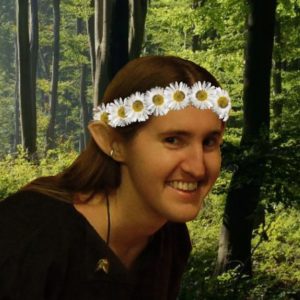The Origins of Halloween

Anybody who ever watched Hocus Pocus probably recalls Alison telling how Halloween is based on “All Hallow’s Eve” to refute Max’s conspiracy theory of Halloween having been invented by the candy companies. But where did All Hallows Eve and the belief that it was the night when spirits roamed the earth come from? The origins of that date back even further to an old European Celtic celebration called Samhain.
Summer’s End
Samhain (pronounced sow-in in Gaelic) literally meant “Summer’s End,” as the Celts recognized only two seasons, summer and winter. (Samhain’s counterpart Gamhain or “Winter’s End” took place in early May. That tradition eventually evolved into the current May Day celebrations). Samhain occurred when the sun reached 15 degrees Scorpio, known as a “cross-quarter day.” It was the last harvest festival and was considered the Celtic New Year.
The Celts believed that darkness was a beginning. Just as they held that a day began at sunset rather than sunrise, so too did they believe a new year should begin as the seasons were going into a time of rest and darker days (longer nights). Being the new year, the Celts also believed that on Samhain night, beings from the spirit world could come out and mingle with the living. Hence the legends of zombies and witches and such that are associated with our present-day Halloween.
While the spirits of any deceased loved ones would be welcome, the Celts also worried that there might be evil spirits about on the night as well. As such, they took to dressing in frightening costumes in hopes of luring any bad spirits out of the villages. This was the very distant forebearer of our present-day trick-or-treating traditions.
Bonfires and Luck
Druids (Celtic priests) would build great bonfires on the hilltops to encourage the return of the sun at the solstice. It was believed that great luck was in the Samhain fires. To start a fire in your hearth with a coal from the fires would bring good luck all year. As such, people would carry home a coal from the bonfires inside a turnip.
For protection they always carved a scary face in the turnip to ensure it would keep away any evil spirits on the walk home. This of course became the pumpkin carving traditions we are all familiar with today.
Traditions Live On
Though the original traditions of Samhain were people’s efforts to protect themselves, eventually the old beliefs evolved. But even so, the day was important enough that it did not disappear entirely. The traces of it can still be seen in our celebrations today. What was originally a frightful and dangerous night in the eyes of the ancients, has become the fun holiday we know today.
And if you really want to stretch your imagination, Edgar Cayce during one of his trances, claimed that Halloween (or November 1) was the anniversary of the sinking of the lost continent Atlantis and the Celtic Samhain celebrations were a distant cultural memory of the event!
By Amber Reifsteck, The Woodland Elf
The information provided on this website is for general information purposes only. If you choose to rely on the information on this website, you do so at your own risk and you assume responsibility for the results. (Full disclaimer here)
Enjoy this post? Click here to subscribe by email and get new posts delivered to your inbox.Ads by Google








